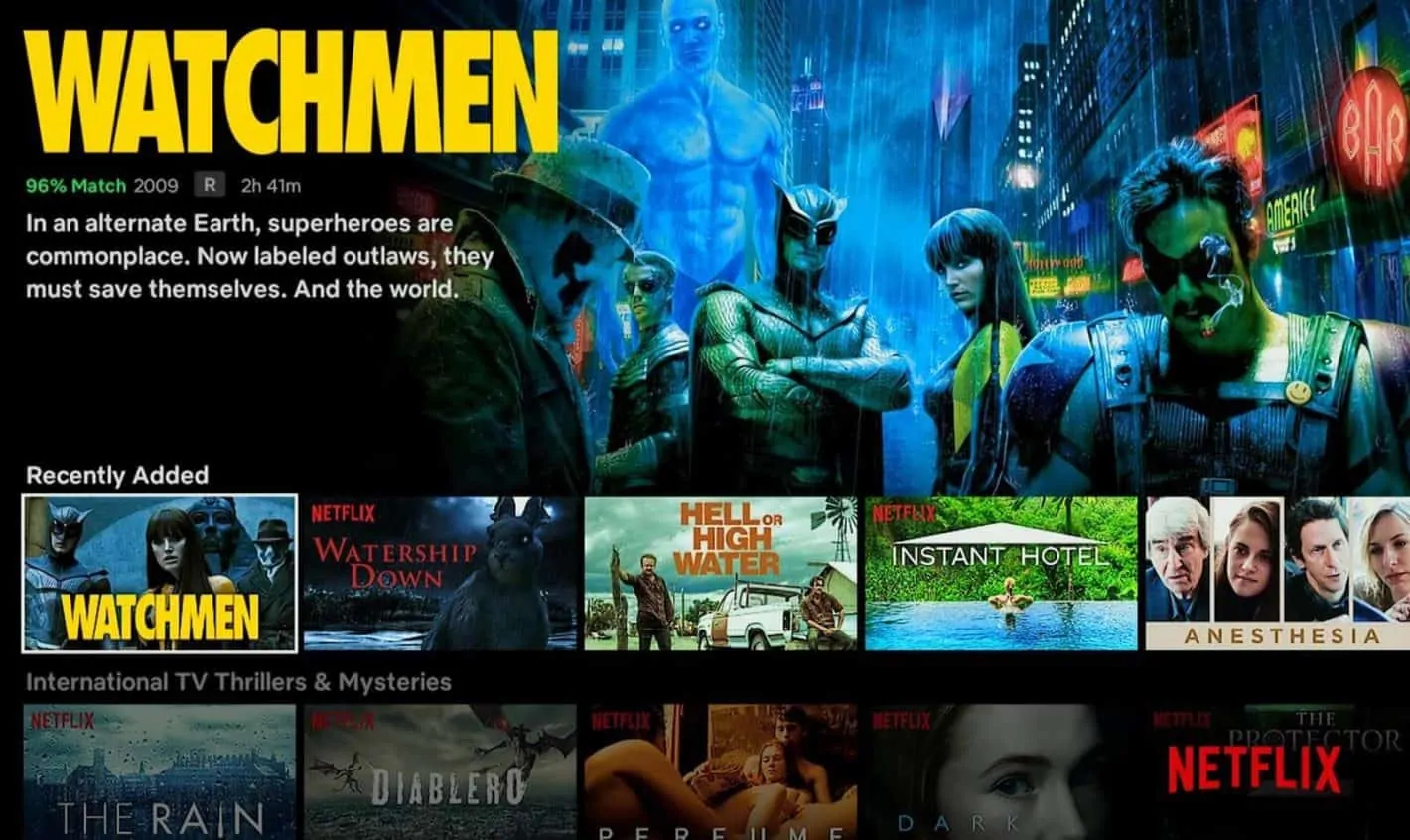It seems like everyone has a Netflix subscription these days and so the chances are good that if you’re reading this, you already are a Netflix customer.
That doesn’t mean this is not an article for you, as early in 2019 Netflix upped its prices and knowing what you are paying is only one half of the story. As you also need to know what you are getting in return for that payment.
In fact, a recent study showed that 7-people were unaware of how much they were paying for Netflix, and so it would seem logical the number of those unaware of their plan’s strengths and weaknesses is the same, if not higher.
Here we’ll take a look at the various plans, what they cost, and what you get. You might just find the plan you are on is not the best value plan for you, or the best option for your individual needs.
If you are new to Netflix, then you’ll find all the information you need here to understand what Netflix offers and at what price to determine the best option for you as a new Netflix user.
What devices does Netflix support?
Netflix is one of the most accessible streaming options as the company has been quick to ensure it is supported on as many platforms as possible. A number of devices will actually come with Netflix as a pre-installed app.
Android smartphone users can access Netflix on pretty much any device by downloading the app from the Google Play Store. As can iOS and Windows Phone users by downloading the same app from their respective app stores.
Streaming devices supporting Netflix include Android TV (all devices), Amazon Fire TV (all devices), Roku OS (all devices), Apple TV and Google Chromecast.
Likewise, Netflix is supported on most major TV brands and regardless of the operating system in use, including Hisense, LG, Panasonic, Philips, Samsung, Sanyo, Sharp, Sony and Vizio.
Game console users can access Netflix via the PlayStation 3 and 4, Xbox 360 and One, Nintendo’s Wii U, as well as the PS Vita and Nintendo 3S.
This is all in addition to most major set-top boxes, Blu-ray players, and PC and laptops. Almost all of the devices listed here should also be able to access Netflix via any major web browser.
How much does Netflix cost?
Netflix is a no-commitment streaming service that provides unlimited access to its content for a set monthly fee. As this is a no-commitment service you are free to cancel at any time or change to a different plan and price.
The “Basic” plan
For those just looking to access Netflix, there’s the Basic plan. This one comes in at $8.99 per month in the US and for that price the user is able to access all of Netflix’s content including the company’s “Original” shows and movies. There’s no limitation on how much content you can consume, or on what devices.
However, there are limitations with this plan. The first is the quality as the Basic plan restricts playback to a standard definition (SD) quality.
The second limitation is the number of streams as the Basic plan only lets users access one stream at a time. This makes the Basic plan not a suitable option for families where Netflix is likely to be accessed on more than one screen at the same time.
It is best to think of the Basic plan as the individual plan.
Pros: Most affordable option. Unlimited access to content. Access on any device.
Cons: Limited to SD quality. Only one stream at a time. Not suitable for families.
The “Standard” plan
The Standard plan seems to be what most consumers gravitate towards and that’s because it offers more of a happy medium compared to the other two. This not only applies to the price, but also to the features. The Standard plans currently costs $12.99 in the US.
In addition to all the benefits offered with the Basic plan, the Standard plan also ups the playback quality to high definition (HD). Adding to this, Standard plan subscribers are also able to take advantage of two streams at the same time.
The Standard plan is an option better-suited to small families where the service is unlikely to be accessed on more than two screens at the same time, or in households where the screens are limited in their resolution capacity.
Pros: Option that suits most users. Higher playback quality than the Basic plan. More simultaneous streams than the Basic plan.
Cons: Starting to get expensive for what it offers. No 4K support. Simultaneous streams capped at two.
The “Premium” plan
For those looking for the best Netflix experience possible, there’s the Premium plan. This is the deluxe option from Netflix and designed to cater to those who want as few restrictions as possible. For this “more unlimited” experience, the price of the Premium plan comes in at $15.99 per month in the US.
As to be expected, this plan comes with all the benefits of the previous two but with fewer limitations. For example, there’s no real limitation on the quality as the Premium plan provides access to 4K Ultra HD (UHD) content. It’s important to note, this does not mean all content is displayed in 4K as all of the content on Netflix is not available in 4K.
4K content will be shown when it is available, and where it is not the resolution will be shown at the highest resolution available.
The second point to note with the Premium plan is the number of streams, as in spite of this being more of an unlimited plan, Netflix still limits the number of streams to four at a time. While this is a bit unfortunate considering the price, it is unlikely to be a massive problem for most people – four people in different rooms watching Netflix, at the same time, should account for the needs of most households.
Those who are in need of more than four simultaneous streams will need to have two active Netflix subscriptions. Although you can mix and match two subscriptions to save on the price, if all of those access points need 4K then that will mean two full Premium plan subscriptions are required.
Pros: Highest quality playback provided. Greatest number of Netflix streams per account.
Cons: Expensive considering only access to one service. Still limits the number of simultaneous streams. No addition add-on or upgrades possible.
Upgrading and downgrading
With Netflix’s latest price increases it has never been more important to make sure you are on the right plan, as there’s not much point paying more than you need or paying less if you need more.
All of these plans offer the same content and therefore the only differences are playback quality and the number of streams.
The first question to ask yourself
Do your various setups support 4K? If no then you don’t need this plan. It’s not worth the extra money unless you desperately need more than two simultaneous streams.
Even if you do need more than two streams at the same time, ask yourself how often you really need more than two? If rarely, then you probably don’t need to be paying for the Premium plan every month. Instead, you could opt for the Standard plan and just upgrade as and when needed – for example, when family or friends come to stay. You can always upgrade for one month and then downgrade again the next – saving $3 each month.
The second question to ask yourself
Even if you have devices that support 4K do you still really need 4K? Again, the chances are no. 4K is still an elusive entity at the content level and while Netflix has a fair amount of 4K content compared to other services, it still lacks compared to the overall number of titles available on the platform.
Once again, this is something where you might be better off subscribing to the Standard plan and then occasionally upgrading to the Premium plan for a month, consuming the new 4K content that’s available, and then downgrading again. Each month you don’t access the 4K content is another $3 saved towards the next month’s bill.
The third question is for individual users
If it is just you accessing Netflix then do you really need to pay for HD let alone 4K? This is especially true if you are likely to be consuming Netflix on a mobile device as well as at home. If you think you can survive on SD quality then the truth is you are better off going for the basic plan. It is purpose-designed for those who are only accessing Netflix one steam at a time and if that’s you – then why pay more?
Over a three-month period, you would pay $39 compared to just $27 on the Basic plan. Based on those figures, that’s almost a free month of Netflix, every three months.
Wrap up
The bottom line, whether you are new to Netflix or an existing subscriber is to take a more dynamic approach to the streaming service. There’s no longer any need to pay for more than you need and most of the time what you need this month might be different to the next month.
So don’t be scared to approach Netflix dynamically and upgrade and downgrade as often as needed. If that’s every month, then do it every month. Netflix does not particularly care what plan you are on as long as you are on a plan, and it takes just a click of the button to change your plan for the next month and start saving.
Alternatively, at the current prices, it might be equally worth checking out what HBO has to offer as the price difference between the two has never been smaller. You might find the best option is to go with one service for one month and then the other for the next. Opt for what best suits you, not for what is best for Netflix.
Try for free
Regardless of which tiered option you go for, Netflix offers all new customers the option to try the service for one month, for free. All free trials are no-commitment trials so you can cancel at any point within the trial period and continue accessing the service for the remainder of the trial.
This includes the Premium plan which offers the highest resolution playback and the greatest number of simultaneous streams. So there’s nothing stopping new customers from utilizing the best experience possible during the free trial and then downgrading to a more suitably-priced plan before you start paying.
Netflix does require a payment option to be provided when signing up and automatic billing is in effect. The free trial begins immediately after signing up and the first payment is automatically collected on the same day of the following month.

